First part
By this blog post, I will demonstrate my learning path for this course. I will also show clues that I met the learning outcome of this course.
This portfolio is structured by order of learning outcome. I will use each of my blog post and comments as evidence to prove my learning. At the end, I will show the improvment of one of my blog post. With original blog post and polish blog post.
EDCI 339 Learning Outcome Will Labled As BOLD and RED
Describe the potential of human-centered learning in distributed and open learning contexts
In my Blog post 1, I read the article called Ethical challenges of edtech, big data and personalized learning: Twenty-first century student sorting and tracking written by Ragan and Jesse. I discussed about FEPRA, which is related to privacy protection. Human-centred refers to satisfy all human needed. Privacy is the most human-related aspect in my opinion. I was also thinking about how nowadays students have online courses due to COVID-19 pandemic. People use Zoom and TikTok these kinds of social media as their open learning platform. I also argued about grading system that we are having. I pointed out that this grading system can not fully evaluate a student. And I design a new grading system.
Some interesting comments came out and discuss about it.


After I read the comments, I realized design a new grading system is too idealistic. My pod member offered me another thought.
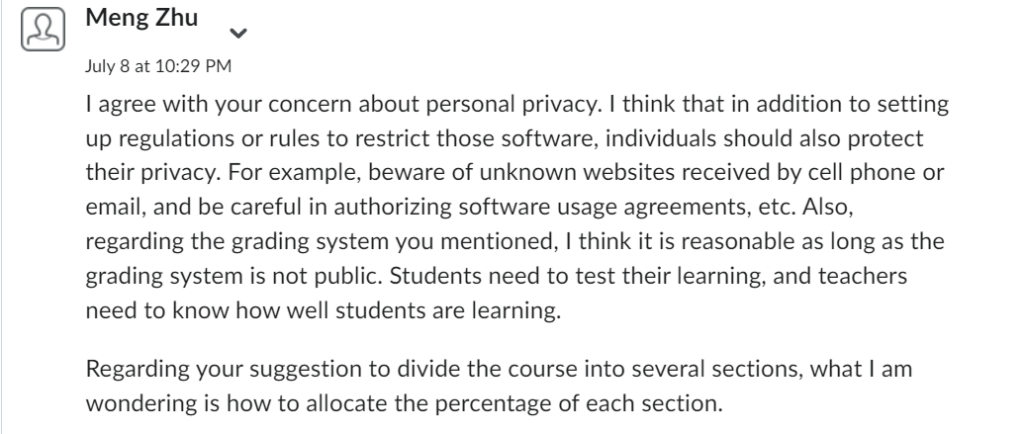
Explore and engage with current literature on the distributed and open education movement
At very first, I do not understand what “distrituted” and “open” mean. After I read Ryan’s Topic 2 post. I had a brief understand for distributed and open.
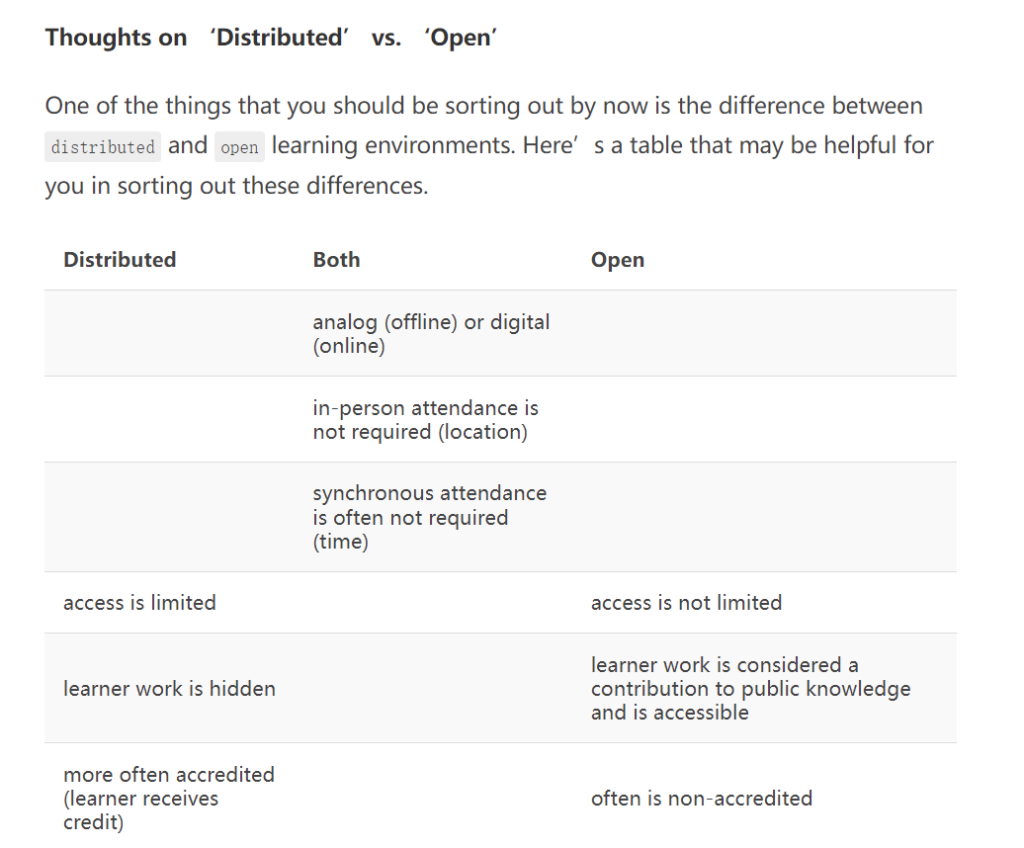
They have some common aspects but can be identify by their difference. After I figure out what is distributed and open learning. I started Pod assignment with my group members. Our pod assignment create a person called Jackson. Jackson is an economic major student, but he wants to be a jornalists. We analyze his personalities and weakness to design an open and distributed learning program. Otto and kerres discussed that “With its core objective of broadening access to and participation in education and improving collaborative learning and teaching quality, open education can facilitate teaching and learning in the digital age.”(Otto, & Kerres, M. 2022). To fully motivate Jackson to learn, it is best to use open learning program.
Here is part of assignment, which we apply distributed and open learning thoery to design.

Critically reflect on and articulate concepts around modality, pedagogy, and access, including distributed and open learning theory, online and open learning history, privacy laws, online learning communities, open research, and open data.
In my blog 2 post, I discussed about online assesment. I argued about online quiz is easy to cheat, and it can not evaluate students properly. In Major’s (2015) article Teaching Online – A Guide to Theory, Research, and Practice, he decribed an example of 2000-size online class, and used online quiz format to give student credits. I realized it is not approapriate. And Ryan gives me a perfect feedback to help me understand the format of online learning.

My other group member gives me another view for my doubt.

Throughout my readings and relections, I find that different tools can have different effect during online education. It is important to figure out what is really suitable for students.
Examine and reflect upon the potential for equitable access for all learners in online and open learning contexts.
For this part, I read the article Digital Redlining, Access, and Privacy. Common Sense Education. By Gilliard and Culik. I learned about redlines, and it is very important to have redlines. Refers to my blog 3 example. But after I read comments of my pod member, I find I am lack of connecting equity to open learning. So I read another two topic. I find Mays(2017) gives sevral good questions to let me thinking.
“And what other access issues do students face as they face these economic challenges? Will they be able to read their Chemistry textbook given their vision impairment? Will their LMS site list them by their birth name rather than their chosen name, and thereby misgender them? Will they have access to the knowledge they need for research if their college restricts their search access or if they don’t have Wi-Fi or a computer at home? Are they safe to participate in online, public collaborations if they are undocumented? Is their college or the required adaptive learning platform collecting data on them, and if so, could those data be used in ways that could put them at risk?”(Mays, E. 2017)
Inclusive and open learning methods are in empathy and require us to take a humanistic approach to creating learning experiences. Empathy creates spaces that value multiple perspectives. Trust is built when learners are not treated as “other people”. As empathy, trust, and respect become more common. Learners find the confidence to engage more and have more autonomy in their development and learning. In this sense, inclusive teaching method is open, and open learning is inclusive.
Conduct research into and critically reflect upon emerging and future educational technologies
In my blog post 4, I discussed about OER. Which is a kind of new defination for me. Here is several benefit for using OER:
- Students can show what have learned and help next generation students learning either.
- Every learner facing a challenge of moving a knowledge from one environment to another environment. This method can help people learning both present and future.
- Letting students make textbook together.
After I read one of my pod member’s blog post. I reread the materials again. This time I foucus on those examples that I missed.


Practice digital, networked, and open literacies in support of learning about distributed and open learning
During having this course, I use LMS platform: Brightspace.

I also use blog to post my thinking.
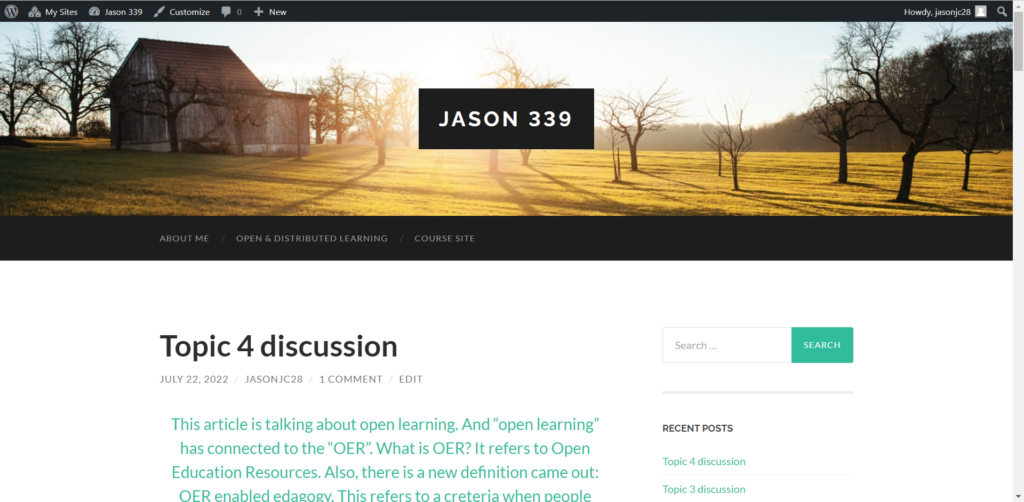
I use discord and mattermost and gmail to communicate with professor and pod members.
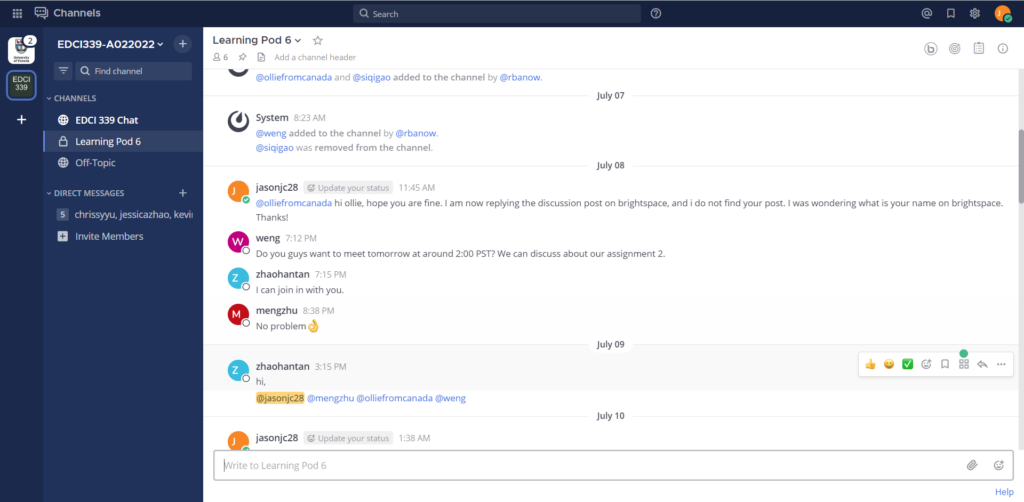
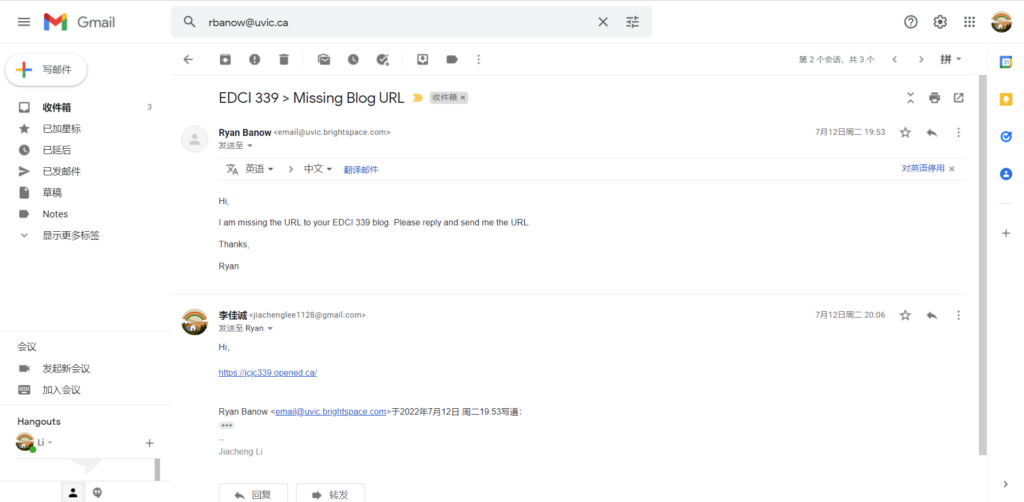
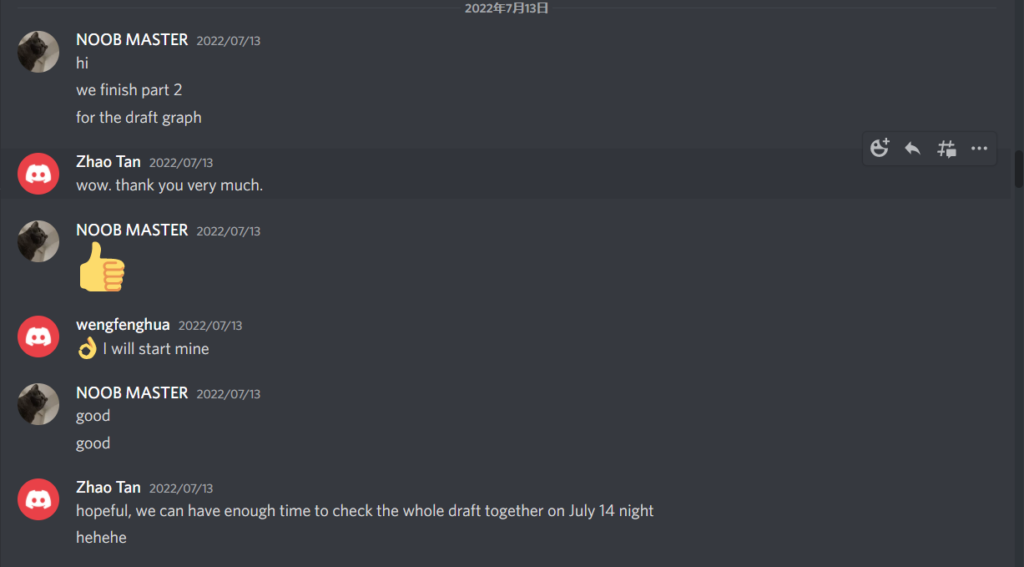
We also use google doc to do our assignment together.
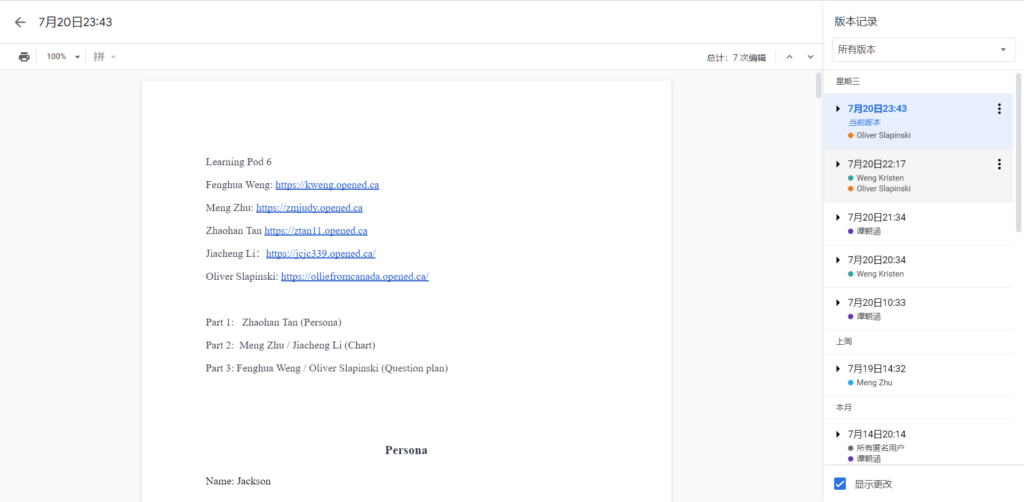
Every tools we use has it unique responsibility. To be honest, it is very hard to use several tools at the same time, but it is helpfu for us to get used to this.
Second Part
URL Before polishing: https://jcjc339.opened.ca/topic-2-discussion/
URL After polishing: https://jcjc339.opened.ca/how-open-and-distributed-learning-connect-with-economic-polishing/
At very first of writing the blog post, I was just thinking about read the material and summarize it. But Ryan’s feedback reminds me I have two parts to improve. The first part is I missed the author that I am citing from. This may confused my reader. The second part is I missed a topic for my blog post. So, I thinked about this course with my major: economic. There is a new topic for my blog post: How open and distributed learning connect with economic?
REFERENCE
Otto, & Kerres, M. (2022). Increasing Sustainability in Open Learning: Prospects of a Distributed Learning Ecosystem for Open Educational Resources. Frontiers in Education (Lausanne), 7. https://doi.org/10.3389/feduc.2022.866917
Major, C. H. (2015). Teaching Online – A Guide to Theory, Research, and Practice. Retrieved from http://ebookcentral.proquest.com/lib/uvic/detail.action?docID=3318874 (pp. 76-108)
Mays, E. (Ed.). (2017). A guide to making open textbooks with students. Rebus Community
Wiley, D., & Hilton III, J. L. (2018). Defining OER-Enabled Pedagogy. The International Review of Research in Open and Distributed Learning, 19(4). https://doi.org/10.19173/irrodl.v19i4.3601